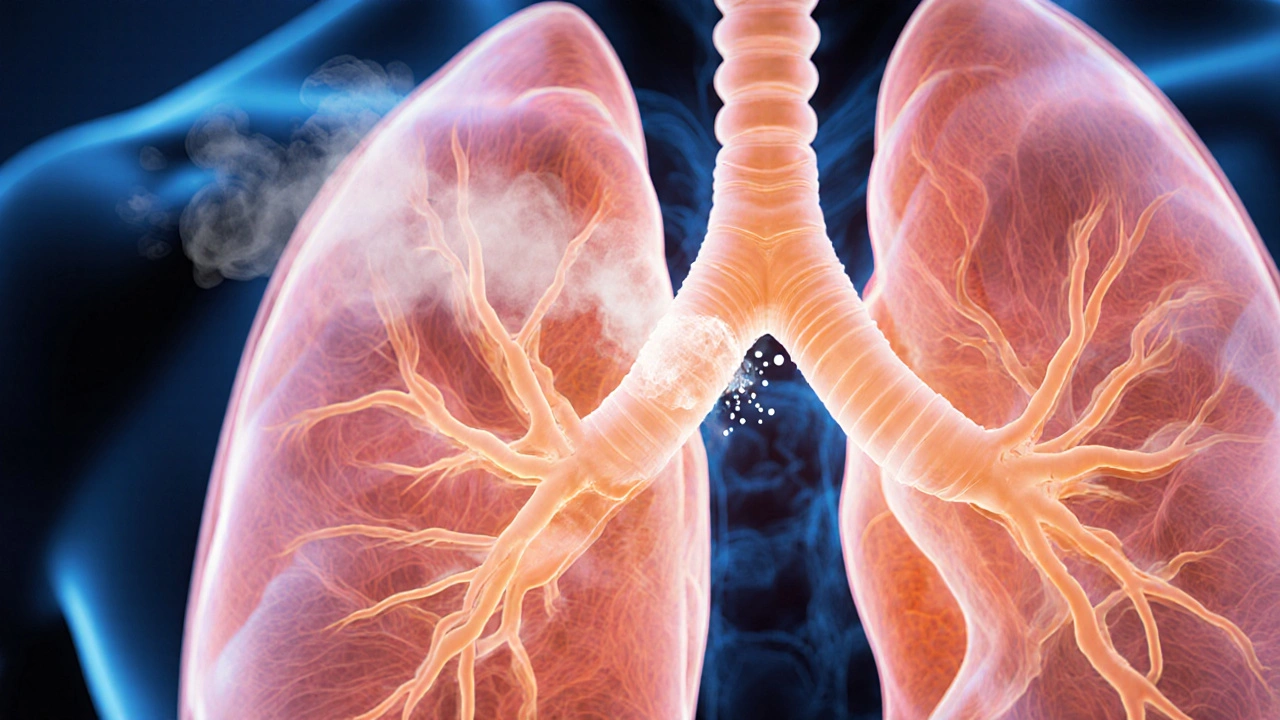Bronchoconstriction: Causes, Symptoms, and Management
When dealing with Bronchoconstriction, the tightening of airway smooth muscle that narrows the breathing passages. Also known as airway narrowing, it is a core problem in many respiratory conditions. Asthma, a chronic inflammatory disease of the airways often triggers bronchoconstriction during an attack. Bronchodilators, medications that relax airway muscles work by counteracting this tightening. Another key player is airway inflammation, the swelling and irritation of bronchial lining caused by allergens or irritants, which amplifies the constriction. Finally, beta‑agonists, a class of bronchodilators that stimulate beta‑2 receptors are often the first line of relief. Understanding how these pieces fit together gives you a clearer picture of what drives bronchoconstriction and how to tackle it.
Why the Airways Tighten: Primary Triggers
Bronchoconstriction isn’t random; it follows a chain of events. First, exposure to an allergen or cold air activates mast cells, releasing histamine and leukotrienes. This chemical burst signals the smooth muscles around the bronchi to contract, creating the hallmark narrowing. In asthma, this response is exaggerated, so even mild triggers can cause a significant drop in airflow. Chronic smokers or people with COPD also experience bronchoconstriction, but here the trigger is often persistent irritation rather than an acute allergic reaction. Recognizing the trigger type helps you choose the right preventive strategy—whether it’s an inhaled corticosteroid for inflammation or a spacer device for better medication delivery.
Another layer involves the nervous system. The vagus nerve releases acetylcholine, which binds to muscarinic receptors, prompting muscle contraction. This neural pathway explains why anticholinergic bronchodilators, like ipratropium, are useful in certain cases. The interplay between inflammation, neural signals, and smooth‑muscle response forms a loop that can sustain bronchoconstriction if left unchecked. Breaking any part of this loop—by reducing inflammation, blocking neural signals, or relaxing muscles—reduces the overall severity of an episode.
From a practical standpoint, measuring lung function with a peak flow meter gives immediate feedback on how much narrowing is occurring. A drop of 20% or more often signals an impending attack, prompting the use of a rescue inhaler. Regular monitoring also helps distinguish between chronic baseline constriction and acute flare‑ups, guiding long‑term medication adjustments.
When it comes to treatment, bronchodilators are the frontline response. Short‑acting beta‑agonists (SABAs) like albuterol act within minutes, opening the airway for quick relief. Long‑acting beta‑agonists (LABAs) are paired with anti‑inflammatory drugs to maintain openness over the day. For patients who don’t respond well to beta‑agonists, anticholinergics or phosphodiesterase‑4 inhibitors may be added. The choice of drug hinges on the underlying cause—whether it’s an allergic spike, a viral infection, or chronic inflammation.
Beyond medication, lifestyle tweaks can lessen the frequency of bronchoconstriction episodes. Avoiding known allergens, using humidifiers in dry climates, and staying up‑to‑date on vaccinations reduce triggers. Breathing techniques such as the Papworth method train the diaphragm to work more efficiently, which can lessen the effort needed to move air through narrowed passages.
All these pieces—understanding triggers, monitoring lung function, selecting the right bronchodilator, and adjusting daily habits—fit together like a puzzle. Below you’ll find a curated set of articles that dive deeper into each aspect, from the science behind airway inflammation to practical guides on using inhalers safely. Explore the collection to get actionable tips that can improve your breathing today.

